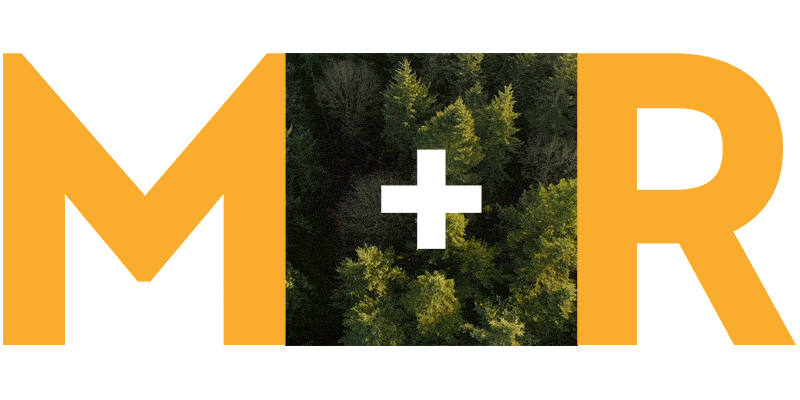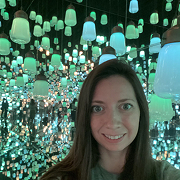Spooky season is upon us! And it’s not just the news and constant onslaught of attacks on our freedoms keeping us up at night. While the Grinch is the scariest costume my toddler could come up with, the scariest thing I’m thinking about is how quickly the advertising landscape is changing! But they say the best way to deal with your fears is to face them head-on. So, grab your pumpkin spice latte and let’s dive into our predictions for the four most “frightening” changes we think non-profits will face in digital ads by this time next year.
1. The Disappearance of Paid Search (As We Know It)
Paid search, long the gold standard for driving high-intent revenue, is already transforming before our eyes. With users starting searches on platforms like ChatGPT or TikTok and Google shifting toward AI Overviews/AI Mode, the traditional Google-led search landscape is ghosting us.
Our Prediction: By early 2026, we believe Google will fully shift all searches to an AI-first experience. (Does that mean traditional search will be gone entirely? No — but it does mean that we should expect traffic to steadily drop.) We also anticipate ChatGPT will roll out some sort of ads offering by this time next year. This means the 2–3 keyword searches we’re used to will be replaced by users entering full sentences, complex questions, and even paragraphs… and the subsequent ad experience will dramatically change.
- The Trick: This means we have to stop thinking about our “keyword strategy” and start focusing on an “answer engine ad strategy.” As user inquiries become incredibly specific and unique, the expectation for a higher degree of personalization in our ads and content will be more critical than ever.
- The Treat: Non-profits can start preparing for this shift now by:
- Piloting Google’s AI products like AI Max
- Integrating paid ads within their AEO (answer engine optimization) strategy
- Developing an organization-wide paid search strategy (ie, a unified approach across brand/parent-brand, marketing, fundraising, c3/c4, etc.)
2. Escalating Censorship
The guidelines advertising platforms use to regulate “political” content are already baffling and contradictory. For example, we’ve seen TikTok ban keywords like ‘maternity pillows’ while selling them on their own store, or Hulu rejecting reproductive rights ads while producing The Handmaid’s Tale.
Our Prediction: Given the unprecedented threats to our nonprofit sector’s existence and the trend of major platforms to rewrite (or ignore) the rules (Google, ABC, TikTok just to name a few), we predict a significant escalation of ad censorship.
- The Trick: By this time next year, your ability to speak plainly in ads, especially on “sensitive social issues,” may be severely restricted. In an election year, where we’ve already seen political ad blackouts, it’s possible that running mission-critical or advocacy ads might become nearly impossible.
- The Treat: Nonprofits must focus on creative messaging strategies that can navigate increasingly narrow guardrails while still telling a meaningful story. Consider leaning into native-style ads that feel like content specific to each platform. In this evolving strategy, the site and landing page are more important than ever, which is where more detailed messaging can be featured.
3. The Machines Take Over
AI agents and browsers are quickly becoming more integrated into the user’s web experience. This means the lines between human and machine activity on the web are blurring rapidly.
Our Prediction: We will see a significant surge in bot and AI traffic that engages even less with traditional websites, further shrinking the opportunity to engage with audiences through programmatic display and video ads.
- The Trick: These AI browsers are very sophisticated and have found ways to make AI agent/browser traffic look like human traffic. Those same AI agents might even start making donations on your donation page!
- The Treat(s):
- Nonprofits should consider starting to shift budget away from traditional programmatic display and video ads in favor of channels that won’t be affected by this shift (social, streaming video, audio, etc).
- AI companies will likely seek additional ways to monetize, and this could become a new ad tactic of the future.
- Remember: your website’s audience includes both humans and robots now! Developments like ChatGPT integrating with Shopify likely point toward a future where the LLMs are recommending what organizations supporters donate to and then executing the transaction for them. As this emerges, ensure your website and payment methods are optimized so that AI agents (OpenAI, Google, Perplexity) can make donations on behalf of supporters.
4. Generative AI will be the Default
Relatedly, platforms are rolling out their own “unique” generative AI offerings constantly.
Our Prediction: Generative AI creative will become the default option on most ad platforms. While this offers efficiency, the widespread use of AI-generated copy, images, and video will mean the need to stand out and tell an authentically human story in ads will be more crucial than ever before.
- The Trick: While most brands are pushing against generative AI for ad creative, platforms like Google and Meta are actively pushing for it and integrating it into their platforms in very sneaky ways, meaning the need to understand the platform, all the nooks and crannies, and what they really mean will be paramount to make sure your brand isn’t accidentally turning on AI generated content.
- The Treat: Users will get very used to AI-generated creative in their feeds. This is an opportunity for your brand to stand out against the AI content by focusing on authentic, human stories with a compelling reason why users should donate/engage with your organization.
Advertising is changing, and it’s changing fast. While we don’t know exactly what the state of digital ads will be by 2026, we know for certain that it will be fundamentally different. The advertisers who are most prepared to shift their strategies and start piloting changes now will be the ones who survive the AI ads monster coming our way.



